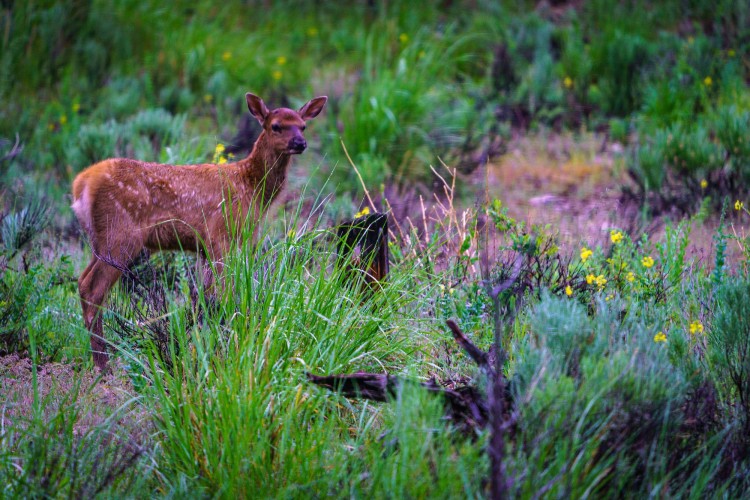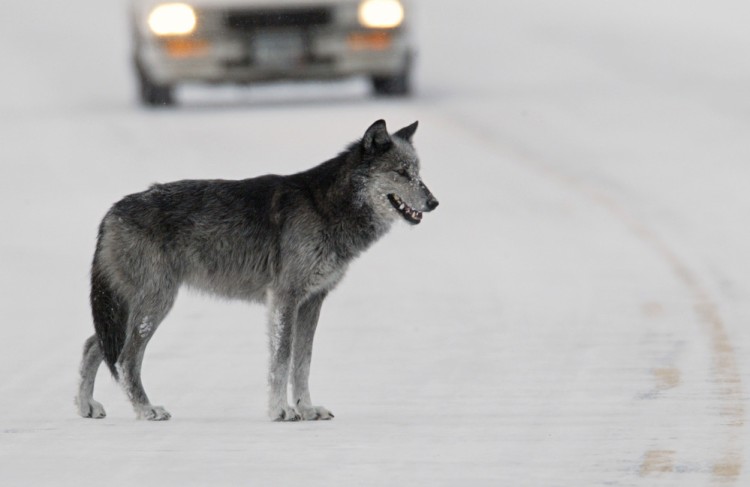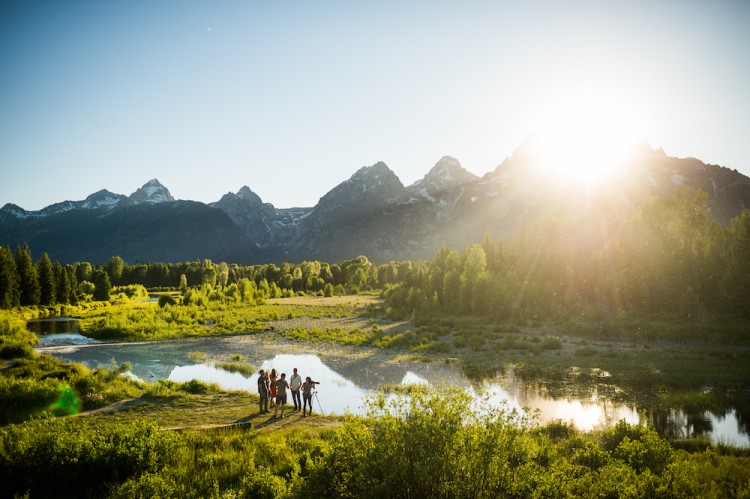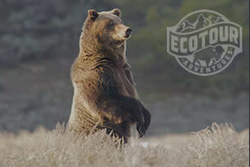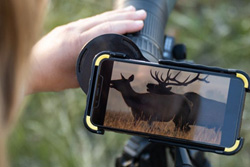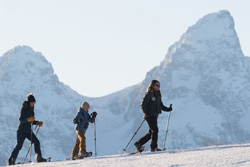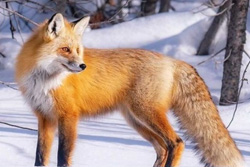Experience the Winter Bighorn Rut
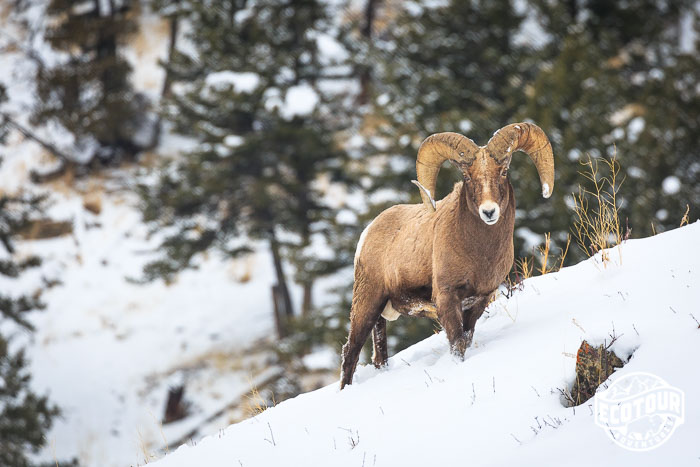

“CRACK!” Like a gunshot, the sound of two bighorn butting heads can be heard over a mile away. It’s a tell-tale sign (and sound!) of winter in Jackson Hole. The bighorn rut, or mating season, is here and it is one of the Greater Yellowstone Ecosystem's most powerful spectacles of nature. Here’s what you need to know about this not to be missed natural event.
Rugged, Tough, and Determined
To find bighorn sheep during much of the year, one must climb high in to the mountains, meeting them in the rugged high alpine habitat they call home. A symbol of the west’s toughness, bighorn disappear into the mountains for months, but come fall, travel to low elevation refuges like Jackson Hole’s National Elk Refuge. It is here, that males will fight to establish dominance and pursue females for the chance to mate.
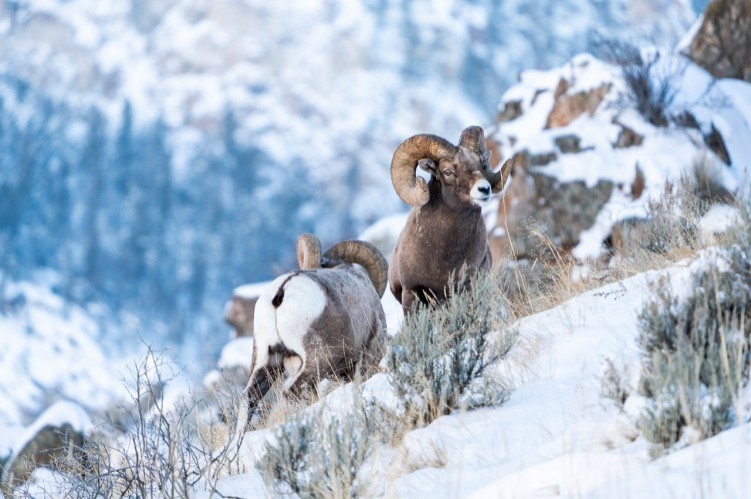
Bighorn Rams in the Greater Yellowstone Ecosystem.
The Battleground
Located in the National Elk Refuge, just minutes from the Elk Antler Arches of Jackson, Wyoming, Miller Butte is an ideal winter habitat for bighorn sheep. The steep hillsides offer protection from predators, while abundant sun and wind minimize snow coverage, helping the sheep find much needed forage throughout the winter. It’s also the proving ground where males begin the rut by establishing a dominance hierarchy. The horns of male bighorn, or rams grow throughout their lives, even creating growth rings every year, allowing observers to estimate their ages. As their horns, weight, and size increase, rams also increase in rank within the herd. At around seven years of age, they become contenders.
Size, Strength and Stamina
For a bighorn, winning a dominance dispute is all about size, strength, and stamina. Similar to the elk rut which occurs earlier in the fall, visual displays are used first. Evenly matched rams meet, pace away from each other, then turn and stare. The rams then build momentum by rearing up on hind legs in a threat jump. Quickly the distance between competitors is closed and at the last second they lower heads, colliding at 20 mph!
The rams freeze. Horns are displayed. If neither retreats, the challenge repeats, until finally, one can no longer withstand the abuse.
Retreating rams are often followed. The victor will kick and rub his horns on the losers back, further establishing dominance.
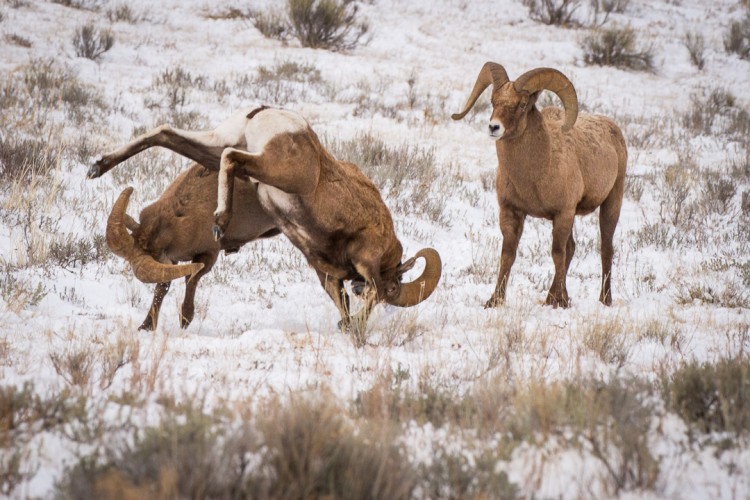
Two bighorn rams collide during a dominance dispute on the National Elk Refuge.
Avoiding Concussions
How do bighorn survive such punishment? In humans, a much lesser blow to the head would cause a concussion, or worse. A few adaptations come in to play here. First, bighorn slow the return of blood from the brain to the body. This constriction causes blood to fill up space in the brain, padding it from rattling around the skull, much like bubble wrap immobilizes a fragile package in a box. Second, ram horns are made out of keratin, the same material found in fingernails. This elastic material flexes on impact, acting as a shock absorber, which reduces the force of impact.
Scientists studying bighorn sheep hope that one day insights from how these animals avoid concussions can help us design better helmets to reduce injury to athletes. Until then, we will need to take steps to minimize concussion risk in contact sports, humans are no match for the mighty bighorn!
Dominant males depend on these key adaptations to establish rank in the herd with a lot on the line. Winning males will mate with 60% of the female herd. However, this means 40% of the herd are mated by subdominant males, who will rush in, outrunning the exhausted dominant male to sneak mating opportunities.
Why the Late Rut?
By late November, most of our other large ungulates (hooved mammals) have long since mated. Why do bighorn mate so late? Across their range in North America, the mating season of bighorn sheep varies widely, but is determined by food availability in spring. Desert bighorn must wait for spring monsoons to green the landscape, in Jackson Hole, melting snow provides optimum forage in late May and June. With a 6th month gestation period, mating in December gives newborn lambs the best chance possible to survive.
Observing the Jackson Hole Bighorn Rut
Now is the time to watch this spectacle of nature, where some of Wyoming’s toughest athletes vie for a chance to pass their genetics on to the next generation. Entrance to the National Elk Refuge is free, please remember that winter is hard on wild animals who are struggling to survive. As such, leaving the road and parking anywhere but inside designated pullouts is prohibited. Bighorn sheep on the refuge also carry pathogens which cause pneumonia, which can be easily transmitted throughout the herd. Please do not allow sheep to approach and lick your car.

Bighorn Sheep can sometimes be found on the road, please help reduce the risk of disease spread by avoiding letting them lick your vehicle!
Abundant Winter Wildlife
Bighorn aren’t the only animals you will find on the National Elk Refuge. As the name suggests, thousands of elk also call the refuge home. By midwinter the Jackson Hole bison herd will make it's way onto the refuge from nearby Grand Teton National Park. In some winters, pronghorn antelope have been known to winter on the refuge, avoiding the 100+ mile migration which takes the majority of the herd out of the valley. Eagles, coyotes, and even wolves can be found hunting and scavenging on the refuge.
Want to take it all in? The guides at Ecotour Adventures have the experience, comfortable safari style vehicles and quality optics to show you the best Jackson Hole has to offer in winter. Please let us know if we can help with guiding your next adventure in Grand Teton or Yellowstone National Parks by calling us 307-690-9533 or emailing info@jhecotouradventures.com.
Photos and blog by Naturalist Josh Metten




